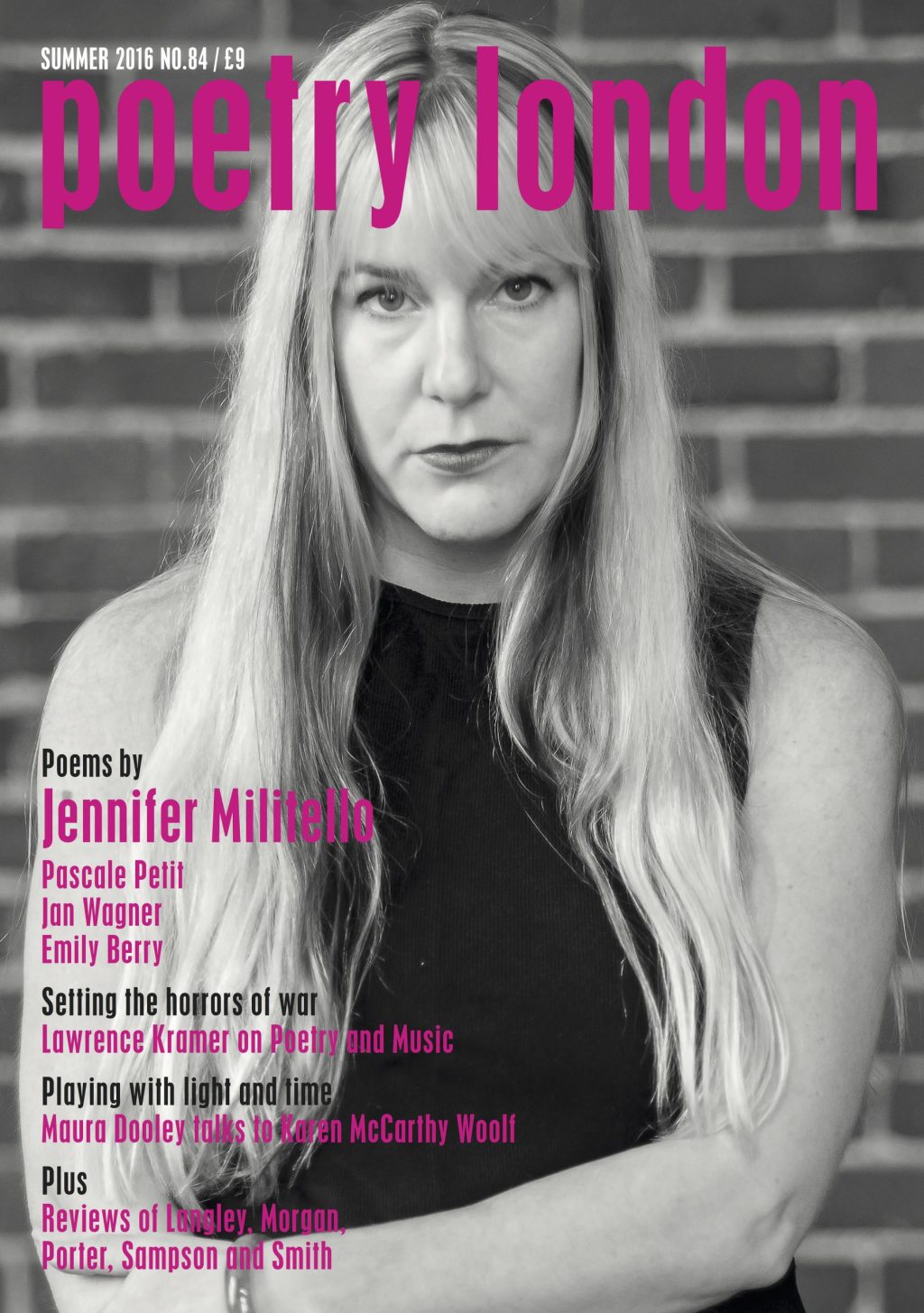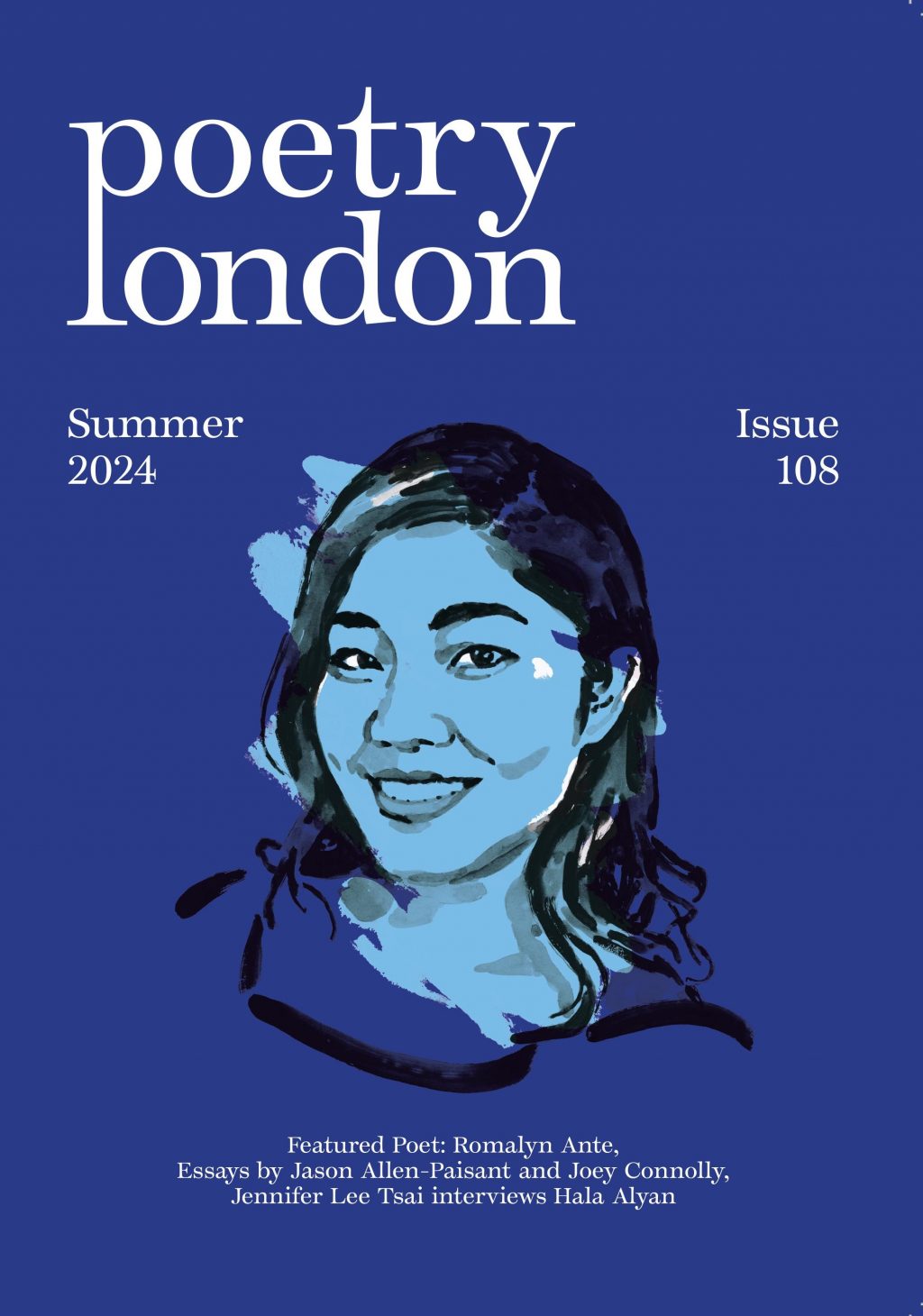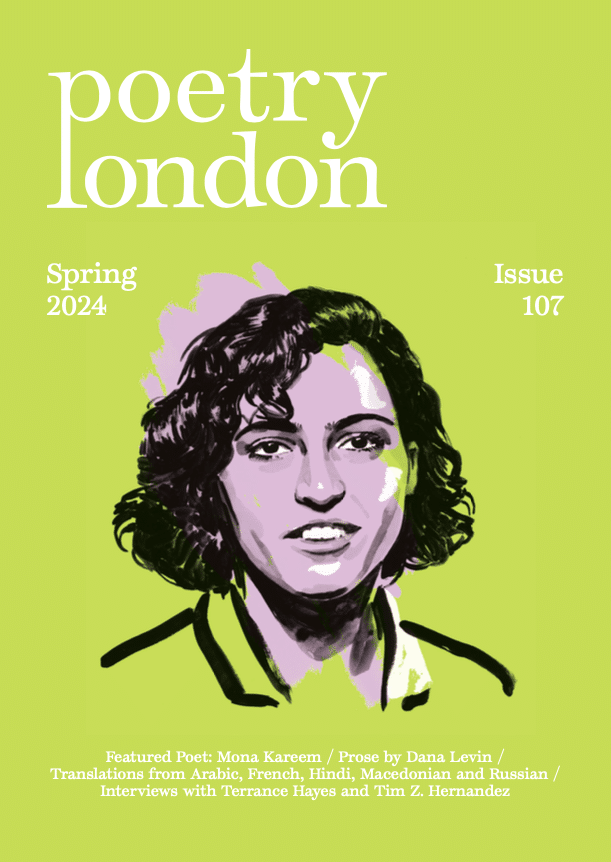Setting the Horrors of War: Lawrence Kramer on Poetry, Music and the Presence of the Past
Musical settings of pre-existing poems are so familiar in the world of classical music that we sometimes forget what strange things they are. The music in these compositions is generally supposed to express the feeling and perhaps the meaning conveyed independently by the poem. Why such doubling is so rewarding and why it has seemed so natural for so long are questions not often asked. To avoid being simply redundant, however, the music is also supposed to add something that the poem cannot offer on its own: something distinctive, something transformational, something timely.
The role of feeling and meaning in the musical setting of texts has been studied extensively. Good vocabularies are available to describe how music distinguishes itself from textual feeling and meaning and how it transforms them. But the relationship of text-setting to time – that is, to historical time – has been largely neglected. Modern art song, meaning roughly the repertoire of the past two-plus centuries, has often flourished on the far side of a chronological gap. Art song is willfully untimely, and if it is not, then it is not art. So the old tune goes. Music in the idiom of one era often takes up, seemingly without reflection, poetry that belongs to another, perhaps by decades, perhaps by centuries. Hugo Wolf composing a collection of fifty-one Goethe settings in 1889, and Benjamin Britten writing a Rimbaud cycle (‘Illuminations’) in 1939 and an ‘anthology’ cycle (‘Serenade for Tenor, Horn, and Strings’) in 1943 with texts by Jonson, Wordsworth, and Tennyson, among others, including an anonymous medieval lyric, furnish prominent examples. The disparity of idioms and cultural frames of reference must make a difference, must they not? But what difference do they make? Can it be heard?
Raising these questions takes us outside the notionally timeless world of song into the world of history from which art song has commonly sought to offer an escape, though always a false one. So how does setting a poem of the past as past differ from setting a poem of the past as something still present to us? Conversely, how does setting a poem of the present as present differ from setting a poem of the present as a revisiting of something past?
These two types of crossing between past and present are fraternal twins. In the first case, the music will inevitably disturb the pastness of the poem by introducing expressive idioms from a later time. The setting will require decisions on whether and how to make the disturbance an act of connection rather than a sheer appropriation. In the second case, the music and the text will, so to speak, belong to the same time zone of expressive idioms. But the setting will require decisions on whether and how to expose its present utterance to the pastness of that earlier time into which it throws its voice.
The opportunity to compose both types of crossing between past and present came my way in early 2015. The resulting work, I believe, taught me something worth recording about how historical time weighs on the combination of music and poetry in song. It all began with the American Civil War. April 2015 was the hundred-and-fiftieth anniversary of the war’s end – symbolically, at any rate: Robert E Lee’s surrender of his army to Ulysses S Grant at Appomattox Courthouse, Virginia. Two universities, Fordham (where I teach) and Harvard, involved me that month in commemorative conferences with roots in both music and poetry. Fordham, together with the journal 19th-Century Music (of which I’m the editor), sponsored a daylong conference on music and memory in the Civil War. Harvard’s Mahindra Humanities Center sponsored an afternoon event commemorating the hundred-and-fiftieth anniversary of the publication of Walt Whitman’s Drum-Taps and the issuing of the book in a new critical edition (the first, surprisingly; the original version had never been republished except in a rare facsimile) that I edited for New York Review Books. Both events concluded with concerts for which I composed song cycles: for Harvard, ‘Nimbus’, a pair of Drum-Taps settings; and for Fordham, ‘Aftermath’, a setting of four poems from Daneen Wardrop’s recently published Cyclorama, a Civil-War-themed volume that won the Poets Out Loud publication prize from Fordham University Press in 2014.
Both Drum-Taps and Cyclorama are exquisitely tuned to the strangeness of time, especially the time of trauma, which never rests with the moment of its occurrence. Many of the poems in Drum-Taps flash back to the war from a time that lay far in the future when the poems were written. ‘In Clouds Descending, in Midnight Sleep’, one of the texts in ‘Nimbus’, takes this anachronistic leap to become perhaps the first poetic record we have of PTSD. Much of Cyclorama consists of monologues in the voices, now obscure, of real historical figures, but the book ends with a series of lyrics in an unknown dying voice that belongs simultaneously to a lost past, a dateless present, and an impending future that has, in some sense, already happened. ‘Aftermath’ sets four of these lyrics. Given such poems, it became clear to me as I worked that I needed to set their senses of time, not just their words. And that meant finding musical marks for the then of Whitman, for whom then has never arrived, and the now of Wardrop, for whom now has become still then.
Few art songs prior to the twentieth century dealt with the horrors of war. For that matter, few lyric poems did. One reason why Whitman’s Drum-Taps is important is that, not to mince words, it invented the lyric poetry of war: a poetry that records suffering, mutilation, and death with a documentary, almost photographic gaze. Part of the inspiration for this new genre may literally have been photographic. Whitman was a keen follower of photography and a friend of Alexander Gardner, whose graphic battlefield photos he probably saw when he visited Gardner’s Washington, DC, studio to be photographed during the war. The rest came from Whitman’s first-hand experience as a volunteer nurse, which he quickly came to regard as the pivotal event of his life.
The stakes set by Whitman’s new genre become clearest by contrast. It so happens that Whitman wrote the first documentary war lyrics only a decade after Alfred Tennyson fumbled the chance to do the same thing. When Tennyson was asked by the Edison Company in 1890 to record his voice for posterity, he chose to recite ‘The Charge of the Light Brigade’, the famous ballad he had written in 1854 after a disastrous battle of the Crimean War. Tennyson intones his lines in a powerful, mellifluous baritone; even on the wax cylinder recording one can hear the music in his voice. But the music was already obsolete, though the brute fact would not be widely recognized until World War I. Tennyson’s recording gave a last gasp to the Homeric tradition his poem epitomizes. Like Homer, Tennyson knows that war is hell; someone had blundered, the Light Brigade was mowed down. But like Homer, Tennyson celebrates the heroism of the warrior, no matter how brutal the carnage or how bad the cause.
Whitman wanted no part of that. In Drum-Taps he decisively expels the Homeric mythos and replaces it with that steady photographic gaze on carnage and terror. He thus anticipates the anti-heroic writing of Wilfred Owen, Siegfried Sassoon, Isaac Rosenberg, and others during the First World War. He dwells on what Owen would call ‘the pity of war distilled’ and in so doing he gave war poetry its modern form.
But that very modernity is now a thing of the past. The wars that spurred it are a century and a century and a half old. How could music honor that fact while preserving the poetry’s enduring force? How could one express musically the historical distance that separates us from these poems of Whitman’s, no matter how much we still read them? And how – this is the same question turned in the other direction – could one do the same for Wardrop, whose work crosses that distance with no pretence at all of overcoming or erasing it?
The two poems set in ‘Nimbus’, ‘In Midnight Sleep’ (as I call it) and ‘Look Down, Fair Moon’, are linked by an image that could be found in grim abundance among Gardner’s battlefield photographs: ‘the dead, on their backs, / With arms tossed wide’ (thus ‘Moon’; in ‘Sleep’, ‘extended wide’). But the poems are contraries: ‘In Midnight Sleep’ records the speaker’s descent into the abyss of post-traumatic flashbacks, while ‘Look Down, Fair Moon’ is a plea for consolation:
Look down, fair moon, and bathe this scene;
Pour softly down night’s nimbus floods, on faces ghastly, swollen, purple;
On the dead, on their backs, with their arms toss’d wide,
Pour down your unstinted nimbus, sacred moon.
In 1957 Ned Rorem composed a well-known setting of ‘Look Down’ to which mine forms both a complement and a riposte. At under two minutes, both settings observe the poem’s brevity, but Rorem’s music moves, within its brief span, from piano at the start to a strident fortissimo and more at ‘arms toss’d wide’. (A swift reversion to piano follows.) This surge of intensity is no doubt effective in its own terms, but it troubles me. It is too immediate, too confident in its ability to reanimate a long-past moment. In its disregard for the pastness of that moment the outcry is an act of appropriation. As a listener, I do not quite want to
exclaim, ‘What’s Hecuba to him?’, but the thought does cross my mind. It is as if the singer were positioned as one of those keening delegated mourners found in some ancient cultures, or as if trauma had become a pretext for displaying compassion rather than a motive for exercising it. Not that Rorem’s song is not beautifully composed; it is. But it is, perhaps, a little careless with the meanings and feelings that it aims to revivify.
I tried to do things rather differently; my setting fluctuates only between pianissimo and piano. This choice of intense quiet (at least as I hear it) is a way of registering the distance between the time of the setting and the time of the poem. The voice hesitates to create the illusion of presence; the restriction marks an impulse to express that does not want to become an impulse to intrude. The voice finds its own relation to the past by pouring itself, slowly, unaccompanied, into the word ‘pour’, letting that temporal extension of the word, of the vowel, bridge the gap of eras.
For the rest, the two-poem sequence of ‘Nimbus’ is reversible; the performers make the choice. If ‘Look Down’ comes first, its composure is shattered by the traumatic memory that follows, making it emblematic of everything subject to shattering by the force of unwilling recall. If ‘Look Down’ comes second, it revisits the scene of carnage sub specie aeternitatis, to invoke Spinoza, thus offering a modicum of consolation, though nothing more – again not wishing to appropriate. The attitude resembles the one that Spinoza identified as ‘intellectual love’, intensity of comprehension rendered as a form of calm. Of course this is just an example, not a principle. There is no formula to follow. But the larger point is that it is possible in song to find ways of marking temporal distance that paradoxically make the past more present than it would otherwise be.
Wardrop supplied the cue to another such mark in ‘Song Panel’, the first poem set in ‘Aftermath’. Verses from Stephen Foster’s song ‘Hard Times, Come Again No More’, set off on the page by italics but not by punctuation, cut across the speaker’s utterance. The verses, and with them the memory of the music that sets them, act both as intrusion, breaking the sense of the text, and as supplement, installing sense in the text. It remains unclear whether the song is something heard, remembered, sung, or hallucinated by the speaker:
A person’s face shapes
to singing, turns
waves placid, easing
to other waves, placider
Cold is a colder
Oh hard times come again
no more: Let me keep them
outside my cabin door.
As italics often do, the italics here point to expression out of sequence, the interposition of one time into another. They stand to the speaker as the poem, and the volume, stand to the reader, as an almost material sign of temporal distance. Beyond that, the italicized lyrics magnify the distance by marking an unspoken difference. For the speaker, in the America of the 1860s, the sound of Foster’s music would be well known, almost second nature, like folk music. The words and the melody would almost surely be remembered together. For a reader in 2014, such recall would be exceptional; what was once a common possession would for most have become a learned allusion.
The setting of ‘Song Panel’ extends Wardrop’s marking by quoting Foster’s refrain as a distant sound. When first heard the tune emerges faintly in the piano’s next-to-highest register over a single sustained tone deep in the bass. A fragmentary, crumbling form of the same passage returns later on. In neither instance does the singer pick up the refrain, or even indicate that the singing persona hears it. This refrain cannot enter the present as song. It enters, precisely, as the remains of song. The italicized words in the poem are never sung. Unable to voice this remnant, or revenant, the cycle instead adopts the four notes of the refrain as a recurrent figure and as the harmonic foundation of two of the settings. The past thus becomes audible in the present of the song, sometimes acutely so, sometimes diffusely, but it never ceases to be wholly past.
The fictitious timelessness of art song is primarily a legacy of the nineteenth-century Romantic aesthetic that conceived of poetry as the language of feeling and feeling as universal. Subjective universality made anachronism of idiom irrelevant, especially for music, which the same aesthetic conceived of as the direct expression of feeling. Song in this context did not so much add something to the language of poetry as subtract any obstacles to direct expression that the poetry could not eliminate. These conceptions survived in art song practice long after they became anachronisms in either poetry or music taken separately. Does art song really demand an escape from history? Popular song doesn’t. Where do we go from here?
To borrow a classic distinction from Roland Barthes, the products of this song aesthetic can still be read (one can take pleasure in them) but they can no longer be written, at least not unreflectively. Too much has changed for that, both in history and in our conception of history (for which read also feeling, language, music and what have you). It is important to add that this statement is not a prescription, much less a proscription, of style; any style, from formal verse to language poetry, old-fashioned atonality to any sort of tonality, will find a clock running backwards on its doorstep. The result, part burden, part opportunity, is that poetry and music, both together and apart, must continually renegotiate their relationship to historical time and to each other in historical time. Like Peter Bird, the historically real speaker of an eponymous poem in Cyclorama, poet and composer will have lived in a time when time (like persons, like bodies, in other of these poems) is a shape shifter and tense a convenient fiction:
June 12, 1863. Marched from Camp Way 5 1⁄2 am halted at
Harwood to execute prisoner wood for desertion . . .
I’ve seen a sparrow separated by cannon ball.
(…)
Years later at Keewenaw a sparrow riffles past my daughter,
ridged wings, late sun.
In a feed store I can tell by the boys’ faces I won’t come through,
thigh shattered. Pine floor smells like woods.
I will die I will walk with a limp, die, I will pull my hip
behind me,
die, I will keep the light at eagle harbor, 1876 in the
Keweenaw, Mary Jane & the children. Water makes a body
around us.
The lighthouse holds sun up lights the spray.
I’m first keeper, I keep
the light, seagulls, ghosts, sky.


